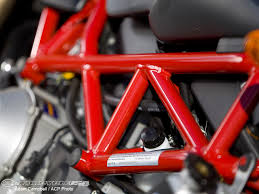Hi All,
I’m working on a V-36 unicycle frame. The goal is to have a handlebar that won’t break; the long extension on my custom handlebar (and KH T-bars, and Nimbus bars) will eventually break. It might take a few years…but the stress of dropping it isn’t good for it.
I’d like a cro moly frame that is as light as possible. I’ve seen pictures of two KH-36 V-frames that were welded together. That will definitely work, but I want something lighter.
Here’s my journey:
Initial analysis: my choice of tubing was too small of a diameter, and the frame flexes when going up steep hills (this puts a lot of stress on it). Note, my old Nimbus frame always used to flex in this same way, and was really annoying. The KH36 frame flexes too, but not as bad. I’m moving up to 7/8" tubing to solve this issue, but that involves building a second frame. I may modify the first with double 1/2" tubing as a test to see if the concept works first.
-corbin

